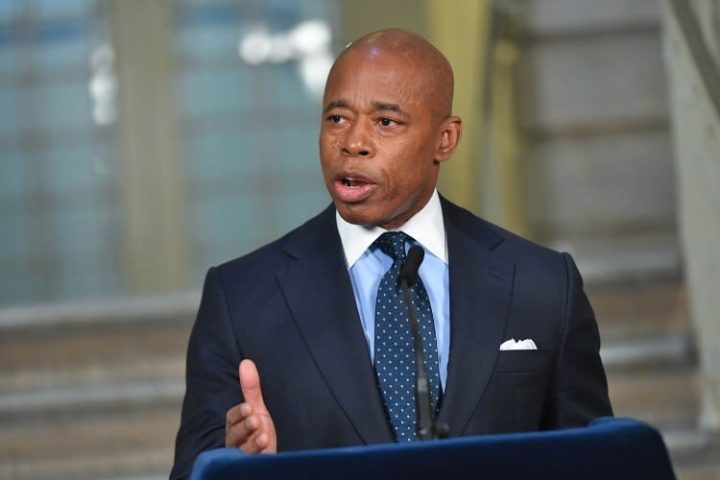
New York City Mayor Eric Adams announced on Monday a four-step program to reduce violent crime in the Big Apple. Since he took over from former mayor Bill DeBlasio on January 1, five NYPD officers have been shot.
His plan:
Reinstating the Public Safety Teams that were terminated under DeBlasio, calling them Neighborhood Safety Teams;
Employing state-of-the-art technology to identify if an individual is carrying a firearm;
Increasing funding for the department’s Gun Violence Suppression Division which builds cases against criminals; and
Appointing judges with a “demonstrated commitment to keeping violent criminals who use guns off New York City streets.”
Adams is attempting to fulfill a campaign promise to rein in violent crime, saying, “I know how to do this. New York has done it before.”
Without saying so directly, Adams is clearly inferring that he will allow officers in the new Public Safety Teams to infiltrate the highest crime-ridden precincts and reinstitute the controversial “stop, question, and frisk” policies that cost former mayor Michael Bloomberg his job when running against leftist Bill DeBlasio in 2013.
The officers will cruise high-crime precincts in unmarked vehicles and will wear street clothes. When confronting a suspect, under Terry Stop rules, they will identify themselves as officers by wearing jackets similar to those used by the FBI when they conduct raids. The new technology could amount to “a no-contact (no frisk) version” of the Terry Stop, said Nolan Hicks of the New York Post.
The Terry Stop, based upon the 1968 Supreme Court ruling in Terry v. Ohio, reduced the Fourth Amendment’s guarantee that “the right of the people to be secure in their persons, houses, papers, and effects, against unreasonable searches and seizures, shall not be violated … but upon probable cause” to “reasonable suspicion.”
Under Mayor Bloomberg, the policy resulted in major pushback from liberal groups who complained that it was enforced out of all proportion in black and Hispanic neighborhoods.
Bloomberg tried to explain his way out of the dilemma in 2015:
Ninety-five percent of murders — murderers and murder victims — fit one M.O. You can just take the description, Xerox it, and pass it out to all the cops. They are male, minorities, 16-25. That’s true in New York, that’s true in virtually every city … and that’s where the real crime is….
[We] put all the cops in minority neighborhoods. Yes, that’s true. Why do we do it? Because that’s where all the crime is.
The impact on violent crime in New York City apparently was inconclusive, and Bloomberg lost his reelection bid to DeBlasio, who shut down the effort.
The new mayor faces a daunting task: selling the resurrected team as a way to fight violent crime to hard-core leftists who are opposed to it. They include Keechant Sewell, Adams’ newly appointed police commissioner, who failed to show up at Adam’s announcement ceremony. Observers will remember that when Sewell accepted her appointment, she did so with a poster featuring cop-killer Assata Shakur behind her. Shakur was charged in 1977 with the murder of New York State Trooper Werner Foerster, escaped from prison in 1979, and now lives in communist Cuba.
Adams also faces resistance from Adrienne Adams, the newly elected speaker of the New York City Council. Her resume includes being a “long time member of the NAACP and the National Action Network (NAN).” The NAN was founded by tax-evader and race-baiter “Reverend” Al Sharpton. In June 2021, the NAN and the NAACP joined forces in a march down Fifth Avenue calling for an end to stop-and-frisk.
Also on the City Council is another hard-core leftist, Tiffany Daban, who, upon learning of Adams’ plans to reduce violent crime, said, “Much in the Mayor’s plan is cause for deep concern.… [It’s] built on a foundation of surveillance and punishment, which are ineffective and dangerous.”
There are other solutions to New York City’s spiraling violent-crime rate, such as allowing constitutional carry among its citizens. At present, the proposed reinstatement of stop and frisk is likely to go nowhere, and violent crime in the Big Apple will continue to increase.



